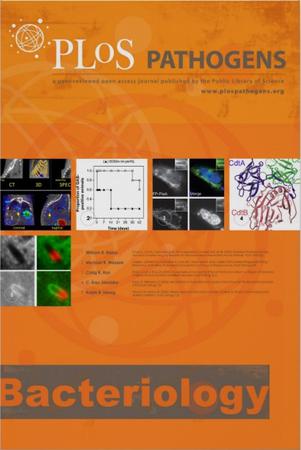在转基因突触核蛋白病小鼠模型中,α-突触核蛋白菌株的传播与细胞朊病毒蛋白的表达无关
IF 4.9
1区 医学
Q1 Immunology and Microbiology
引用次数: 0
摘要
据推测,细胞朊病毒蛋白 PrPC 具有α-突触核蛋白受体的功能,可能会促进α-突触核蛋白聚集体在帕金森病等神经退行性疾病中的细胞间扩散和/或毒性。此前,我们生成了α-突触核蛋白聚集体的 "盐(S)"和 "无盐(NS)"品系,它们会在过表达 A53T 突变人类α-突触核蛋白的 M83 转基因小鼠中引起不同的病理表型。为了验证PrPC促进α-突触核蛋白聚集体扩散的假设,我们培育了表达或不表达PrPC的M83小鼠。在脑内接种 S 株或 NS 株后,M83 小鼠体内缺乏 PrPC 并不能阻止疾病的发展,而且对α-突触核蛋白株指定的属性(如大脑α-突触核蛋白沉积的程度、特定脑区和细胞类型的选择性靶向、诱导的α-突触核蛋白沉积物的形态以及蛋白酶抗性α-突触核蛋白聚集体的结构指纹)的影响微乎其微。同样,腹腔注射S株后,表达PrPC和缺乏PrPC的M83小鼠在疾病表现上没有明显差异。有趣的是,腹腔接种 NS 株会导致两种不同的疾病表型,表明α-突触核蛋白株的演变,但这也与 PrPC 的表达无关。总之,这些结果表明,PrPC 在表达 A53T 突变人类α-突触核蛋白的小鼠中的α-突触核蛋白菌株的传播、神经侵入和进化过程中最多只能发挥微不足道的作用。因此,其他假定受体或细胞间传播机制可能对疾病期间α-突触核蛋白聚集体的扩散有更大的影响。本文章由计算机程序翻译,如有差异,请以英文原文为准。
α-Synuclein strain propagation is independent of cellular prion protein expression in a transgenic synucleinopathy mouse model
The cellular prion protein, PrPC , has been postulated to function as a receptor for α-synuclein, potentially facilitating cell-to-cell spreading and/or toxicity of α-synuclein aggregates in neurodegenerative disorders such as Parkinson’s disease. Previously, we generated the “Salt (S)” and “No Salt (NS)” strains of α-synuclein aggregates that cause distinct pathological phenotypes in M83 transgenic mice overexpressing A53T-mutant human α-synuclein. To test the hypothesis that PrPC facilitates the propagation of α-synuclein aggregates, we produced M83 mice that either express or do not express PrPC . Following intracerebral inoculation with the S or NS strain, the absence of PrPC in M83 mice did not prevent disease development and had minimal influence on α-synuclein strain-specified attributes such as the extent of cerebral α-synuclein deposition, selective targeting of specific brain regions and cell types, the morphology of induced α-synuclein deposits, and the structural fingerprints of protease-resistant α-synuclein aggregates. Likewise, there were no appreciable differences in disease manifestation between PrPC -expressing and PrPC -lacking M83 mice following intraperitoneal inoculation of the S strain. Interestingly, intraperitoneal inoculation with the NS strain resulted in two distinct disease phenotypes, indicative of α-synuclein strain evolution, but this was also independent of PrPC expression. Overall, these results suggest that PrPC plays at most a minor role in the propagation, neuroinvasion, and evolution of α-synuclein strains in mice that express A53T-mutant human α-synuclein. Thus, other putative receptors or cell-to-cell propagation mechanisms may have a larger effect on the spread of α-synuclein aggregates during disease.
求助全文
通过发布文献求助,成功后即可免费获取论文全文。
去求助
来源期刊

PLoS Pathogens
生物-病毒学
CiteScore
11.40
自引率
3.00%
发文量
598
审稿时长
2 months
期刊介绍:
Bacteria, fungi, parasites, prions and viruses cause a plethora of diseases that have important medical, agricultural, and economic consequences. Moreover, the study of microbes continues to provide novel insights into such fundamental processes as the molecular basis of cellular and organismal function.
 求助内容:
求助内容: 应助结果提醒方式:
应助结果提醒方式:


